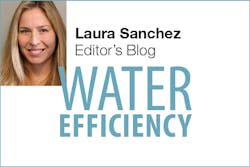Today more than 1.2 billion people worldwide lack access to clean drinking water. The combined effects of population growth and climate change are likely to create increased challenges for water management in the US as well.
Projections of water supply and demand over the 21st century show that the US will face serious water shortages within the next 55 years. In fact, up to 96 of the 204 US groundwater basins are projected to have monthly shortages by 2071, researchers reported in a study, published in Earth’s Future.
What can we do to prevent these shortages? In short, we must adapt. Beyond mitigating non-revenue water loss through leak detection and careful asset management, researchers explain that cultural changes are also necessary to reduce agricultural irrigation usage, develop water reuse programs, and adopt collaborative management approaches such as water banking.
In water banking systems, water not allocated for current use is stored for later, often in below-ground aquifers. These systems have proven effective in coordinating conjunctive water usage among multiple parties and in responsibly managing withdrawals from groundwater basins and above-ground sources.
The city of Phoenix, AZ, has taken a proactive approach to climate change and water resource management. In a Yale Environment 360 article, Kathryn Sorensen, Phoenix’s water services director, outlines some of the efforts the city has taken to improve the resiliency of its water system.
One of these programs is the Arizona Water Bank, an underground water storage system that was developed in 1996 to conserve Arizona’s allotment of Colorado River water from flowing to California. Since then, the state has developed seven additional water banks that are today able to store about 3.6 million acre-feet in 28 sites across three counties. In the largest of these water banks, 19 infiltration basins cover more than 200 acres.
Phoenix also uses recycled wastewater to cool the Palo Verde Nuclear Power Plant and irrigate agricultural fields. It is working on a plan to convert sewage water to potable water. Sorensen also indicates that desalinization of seawater may also be part of Arizona’s water mix someday.
What solutions can you suggest to improve the resiliency of your area’s water system? Does your organization currently bank water?
